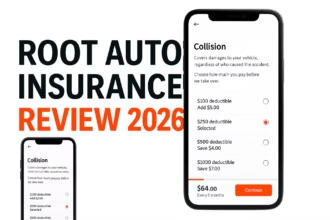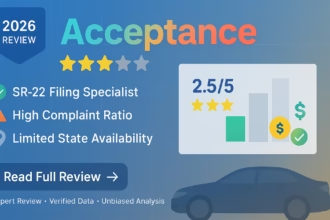
American homeowners are paying 53% more for insurance than they did just five years ago, yet many are still overpaying by thousands each year. With average premiums now exceeding $2,400 annually, finding the cheapest homeowners insurance companies isn’t just smart it’s essential for your financial health.
Why Homeowners Insurance Costs Keep Rising
The homeowners insurance market is experiencing unprecedented challenges. In 2023 alone, insurers covered $80 billion of the year’s total $114 billion in natural disaster losses, according to the Congressional Budget Office. This perfect storm of climate-related events and inflation has created a crisis where premiums have skyrocketed across the nation.
Key factors driving costs higher include:
- Climate disasters: Hurricanes, wildfires, and severe storms now cause over $100 billion in annual losses
- Inflation impact: Building materials and labor costs have increased 40% since 2020
- Supply chain disruptions: Repair delays and material shortages drive up claim costs
- Reinsurance costs: Primary insurers face higher costs for their own coverage
The Top 6 Cheapest Homeowners Insurance Companies for 2025
Based on a comprehensive analysis of premium data from over 100 insurers, here are the most affordable options available to American homeowners:
1. USAA – Best Overall Value
Average Annual Premium: $1,256 (for $300K dwelling coverage)
Monthly Cost: $105
Bankrate Score: 4.8/5
USAA consistently offers the cheapest homeowners insurance rates, with premiums averaging $1,210 below the national average. However, coverage is exclusively available to active-duty military, veterans, and their qualifying family members.
Key Benefits:
- Cheapest rates in our analysis
- Military-focused coverage options
- Replacement cost coverage standard
- A++ financial strength rating from AM Best
Standout Discounts:
- Connected home devices
- Protective device installations
- Loyalty savings programs
2. Auto-Owners – Best Budget Option
Average Annual Premium: $2,124
Monthly Cost: $177
Bankrate Score: 4.3/5
Auto-Owners earned the 2025 Bankrate Award for Best Budget Home Insurance Company, offering coverage in 26 states through independent agents.
Key Benefits:
- Second-cheapest option overall
- Guaranteed home replacement coverage
- Equipment breakdown protection
- Superior A++ AM Best rating
Available Discounts:
- Multi-policy bundling
- Water shut-off system installation
- Mortgage-free homes
3. Travelers – Most Accessible Budget Option
Average Annual Premium: $2,055
Monthly Cost: $171
NerdWallet Rating: 4.5/5
Travelers provides the cheapest homeowners insurance among widely available national carriers, making it accessible to homeowners who don’t qualify for USAA.
Key Benefits:
- User-friendly online platform
- Extensive coverage customization options
- Strong financial stability
- Nationwide availability
Top Discounts:
- Multi-policy bundling
- Claims-free history
- New homebuyer programs
- Smart home device installations
4. Progressive – Best for Comparison Shopping
Average Annual Premium: $2,170
Monthly Cost: $181
Progressive offers both its own policies and third-party options, allowing customers to compare multiple insurers through one platform.
Key Benefits:
- Multiple insurer options available
- Strong auto bundling discounts
- Flexible coverage choices
- Competitive rates for various risk profiles
5. Nationwide – Best for Bundling
Average Annual Premium: $1,935
Monthly Cost: $161
Bankrate Score: 4.2/5
Winner of the 2025 Bankrate Award for Best Bundling, Nationwide excels at providing comprehensive insurance and financial products.
Key Benefits:
- Below-average premiums
- Extensive bundling opportunities
- Multiple discount options
- A+ AM Best rating
6. American Family – Best Digital Experience
Average Annual Premium: $1,955
Monthly Cost: $163
Bankrate Score: 4.0/5
American Family leads in digital innovation while maintaining competitive rates across 19 states.
Key Benefits:
- Top-rated digital platform
- Extensive policy endorsements
- Strong customer satisfaction
- Local agent support
Cheapest Homeowners Insurance by State
Location dramatically impacts your insurance costs. Here are the cheapest providers by state based on 2025 data:
| State | Cheapest Company | Average Annual Rate |
| California | Travelers | $995 |
| Texas | Texas Farm Bureau | $2,835 |
| Florida | People’s Trust | $1,585 |
| New York | State Farm | $1,455 |
| Pennsylvania | Cumberland Mutual | $655 |
| Illinois | Hastings Mutual | $1,740 |
| Ohio | Buckeye | $795 |
| Georgia | Progressive | $1,600 |
| North Carolina | Lititz Mutual | $1,195 |
| Michigan | Hastings Mutual | $1,155 |
Note: USAA often provides the lowest rates but is restricted to military families.
How to Find the Cheapest Homeowners Insurance for Your Situation
For Homeowners with Poor Credit
Credit scores significantly impact insurance rates in 47 states. Homeowners with poor credit pay an average of 53% more annually. The cheapest options for poor credit include:
- Travelers – $3,555 annually
- Progressive – $3,655 annually
- Nationwide – $3,905 annually
Working to improve your credit from poor to average could save approximately $1,500 annually.
For New Homeowners
New homes typically qualify for lower rates due to updated building codes and newer systems:
- Progressive – $710 annually
- USAA – $805 annually (military only)
- State Farm – $1,040 annually
For Homeowners with Recent Claims
If you’ve filed a recent claim, these companies offer the most competitive rates:
- USAA – $1,925 annually (military only)
- Progressive – $2,255 annually
- Auto-Owners – $2,385 annually
CTA Button: Compare Rates for Your Situation →
Proven Strategies to Lower Your Homeowners Insurance Costs
1. Bundle Your Policies
Combining home and auto insurance typically saves 5-25% on both policies. The best bundling discounts come from:
- Nationwide: Up to 25% savings
- Allstate: Average 16% savings
- State Farm: Up to 17% savings
2. Increase Your Deductible
Raising your deductible from $1,000 to $2,500 can reduce premiums by 15-20%. Ensure you have adequate emergency savings to cover the higher deductible.
3. Improve Home Security
Install these features for significant discounts:
- Security systems: 5-20% savings
- Fire sprinkler systems: 5-15% savings
- Smart home devices: 5-10% savings
- Storm shutters: 5-10% savings in hurricane-prone areas
4. Maintain Claims-Free Status
Most insurers offer claims-free discounts of 5-15% for homeowners who haven’t filed claims in 3-5 years.
5. Shop Annually
Insurance rates change frequently. Shopping annually can save hundreds, as rate increases with your current insurer may not reflect market-wide trends.
Critical Mistakes to Avoid When Choosing Cheap Homeowners Insurance
Mistake 1: Choosing Inadequate Coverage Limits
While lower limits mean cheaper premiums, underinsuring your home could cost thousands in out-of-pocket expenses. Ensure your dwelling coverage equals 100% of your home’s replacement cost.
Mistake 2: Ignoring Financial Strength Ratings
A cheap policy from a financially unstable insurer could leave you vulnerable. Only consider insurers with AM Best ratings of A- or higher.
Mistake 3: Focusing Only on Price
Consider these factors beyond cost:
- Customer service quality
- Claims handling reputation
- Coverage options available
- Discount opportunities
Mistake 4: Not Reading Policy Exclusions
Standard policies don’t cover floods, earthquakes, or certain types of water damage. Understand what’s excluded and consider additional coverage if needed.
Expert Tips for Maximum Savings
According to insurance industry experts, homeowners can typically save 20-40% by implementing these strategies:
From Insurance Commissioner Perspectives: “The biggest mistake homeowners make is not shopping around annually. Rates can vary by hundreds or even thousands of dollars between companies for identical coverage.” – National Association of Insurance Commissioners
Industry Insider Advice:
- Review coverage annually: Home values and replacement costs change
- Document your belongings: Detailed inventories speed claims and ensure adequate coverage
- Consider actual cash value vs. replacement cost: Replacement cost coverage costs more but provides better protection
The True Cost of Cheap Insurance: What You Need to Know
While finding affordable coverage is important, the cheapest option isn’t always the best value. Consider these factors:
Coverage Quality Indicators
- A.M. Best Rating: A+ or higher recommended
- J.D. Power Scores: Customer satisfaction ratings above 700
- NAIC Complaint Index: Scores below 1.0 indicate fewer complaints
Red Flags to Avoid
- Companies offering rates significantly below market average
- Insurers with poor financial strength ratings
- Providers with consistently high complaint ratios
- Policies with excessive exclusions or limitations
State-Specific Considerations for Cheap Homeowners Insurance
High-Risk States (Florida, Louisiana, Texas, California)
In disaster-prone areas, focus on:
- Wind/hail coverage adequacy
- Deductible structures (percentage vs. flat amount)
- Additional living expense limits
- Replacement cost guarantees
Low-Risk States (Vermont, New Hampshire, Delaware)
In stable climate areas, consider:
- Higher deductibles for maximum savings
- Liability coverage increases for asset protection
- Identity theft coverage additions
- Equipment breakdown endorsements
How Insurance Companies Calculate Your Premium
Understanding rating factors helps you make informed decisions:
Primary Rating Factors
- Location (30-40% of premium)
- Home characteristics (25-35% of premium)
- Coverage limits (15-25% of premium)
- Credit score (10-20% of premium)
- Claims history (5-15% of premium)
Optimization Strategies
- Location: Can’t change, but understand your area’s risk profile
- Home characteristics: Updates and improvements can lower rates
- Coverage limits: Balance adequacy with affordability
- Credit score: Improve over time for better rates
- Claims history: Avoid small claims when possible
Technology and Savings: The Future of Cheap Homeowners Insurance
Smart Home Discounts
Modern technology offers new ways to save:
- Water leak detectors: 5-10% discounts
- Smart thermostats: 3-5% savings
- Security cameras: 5-15% reductions
- Automated shut-off systems: 10-20% discounts
Usage-Based Insurance
Some insurers now offer programs that monitor home conditions and reward safe behaviors with lower premiums.
Regional Price Variations: Understanding Your Market
Most Expensive States (2025 Data)
- Nebraska: $6,425 average annual premium
- Louisiana: $4,500+ average
- Florida: $4,000+ average
- Texas: $3,500+ average
- Oklahoma: $3,500+ average
Cheapest States (2025 Data)
- Vermont: $834 average annual premium
- Delaware: $964 average
- New Hampshire: $1,036 average
- Alaska: $1,020 average
- West Virginia: $1,040 average
Making Your Final Decision: A Step-by-Step Process
Step 1: Determine Your Coverage Needs
Calculate your home’s replacement cost using online tools or professional appraisals.
Step 2: Research Company Options
Focus on insurers with:
- Strong financial ratings (A+ or better)
- Good customer service records
- Competitive pricing in your area
- Available discounts you qualify for
Step 3: Get Multiple Quotes
Obtain quotes from at least 3-5 companies, ensuring identical coverage limits for accurate comparison.
Step 4: Review Policy Details
Compare not just prices, but:
- Coverage exclusions
- Deductible options
- Additional coverage available
- Discount opportunities
Step 5: Make Your Decision
Choose based on the best combination of price, coverage, and company reputation.
CTA Button: Get Your Personalized Quote →
Frequently Asked Questions About Cheap Homeowners Insurance
Q: Will my rates increase if I file a claim?
Most insurers do raise rates after claims, which is why many experts recommend paying for minor repairs out-of-pocket. Rate increases typically range from 10-40% depending on the claim type and your history.
Q: How often should I shop for homeowners insurance?
Annual shopping is recommended, as rates change frequently and your current insurer’s increases may not reflect market trends.
Q: What’s the difference between actual cash value and replacement cost coverage?
Replacement cost pays to replace items at current prices, while actual cash value deducts for depreciation. Replacement cost coverage costs more but provides better protection.
Q: Can I get homeowners insurance with bad credit?
Yes, though you’ll pay higher rates in most states. Focus on improving your credit over time and shopping with companies that are more lenient with credit scoring.
Q: Is the cheapest insurance always the best choice?
Not necessarily. Consider the company’s financial strength, customer service record, and coverage adequacy alongside price.
Your Next Steps: Don’t Wait on Rising Rates
Homeowners insurance rates are changing rapidly, with increases averaging 10-20% annually in many markets. Taking action now could save you hundreds or thousands of dollars over the coming year.
The homeowners insurance market will continue evolving, but the fundamentals remain: shop regularly, maintain good credit, bundle when beneficial, and choose adequate coverage from financially stable insurers.
Key Takeaways:
- USAA offers the cheapest rates for military families
- Travelers provides the best value for general consumers
- Annual shopping can save 15-30% on premiums
- Bundling policies typically saves 10-25%
- Credit improvement can reduce costs by $1,500+ annually
Insurance rates change daily, and the best deals often have limited availability. Compare options from multiple top-rated insurers to ensure you’re getting the coverage you need at the price you deserve.
In another related article, Homeowners Insurance: Protecting Your Home with Insurance





